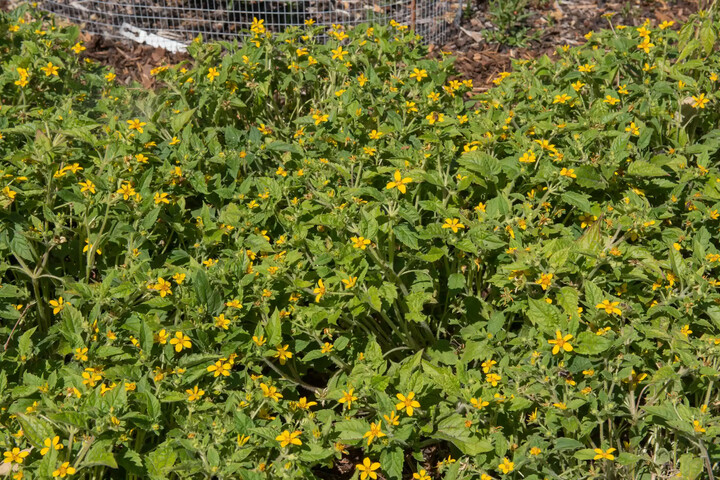Looking for a ground cover plant that is low-maintenance and eye-catching? Golden star (Chrysogonum virginianum) is a perfect choice! Native to the eastern United States, golden star is great for border uses, edging, ground cover, wildflower gardens, woodland understory, rock gardens, and more! It produces an abundance of delicate yellow flowers from mid-spring through to late fall that are accented by dense dark green foliage. Golden star is considered a perennial, although in areas with mild winters it may remain evergreen throughout the entire year. Learn how to grow and care for this stunning native wildflower.
Botanical Name :Chrysogonum virginianum
Common Name :Golden star, green-and-gold
Plant Type: Perennial
Mature Size: 6-8" tall
Sun Exposure: Partial sun
Soil Type :Sandy, clay
Soil pH :<6.8
Bloom Time :Spring, summer, fall
Flower Color: Yellow
Hardiness: Zones 5-9
Native Area :United States

How to Grow Golden Star
These easy-to-grow creeping perennials require little ongoing maintenance. Golden star thrives in moist, shady locations and is often planted with plants that enjoy similar locations such as hostas and ferns. They have a medium growth rate, and self-spread via suckers and rhizomes, although the spread is not considered invasive. If desired, golden star can be trimmed and divided yearly to control the spread.
Golden star makes an excellent groundcover and can tolerate light foot traffic. It flowers nearly year-round from mid-spring to late fall, and regular deadheading will help to encourage ongoing flowering. Occasionally, golden star can be bothered by snails and slugs but otherwise, it is not prone to any serious pests or diseases.
Light
If you’re looking for a plant to fill up some shady areas of your yard, golden star is a perfect choice. It thrives in part shade to full shade conditions, but can also adapt to sunnier locations. Full sun may scorch the leaves and delicate flowers, so avoid areas that receive hot, direct sun for the majority of the day.
Soil
Sandy or clay-based soil that is well-drained and rich in organic matter is ideal for golden star. Although, as long as the soil is not waterlogged, golden star is known to be adaptable to other soil conditions. This creeping perennial thrives in neutral to acidic soil, with a maximum pH of around 6.8.
Water
Water golden star regularly to keep the plant healthy and full. Golden star appreciates consistent moisture and the soil should be kept evenly moist, but not soggy. Waterlogged soil will quickly lead to root rot. In periods of drought, golden star is known to be somewhat drought tolerant.
Temperature and Humidity
Golden star grows well in USDA zones 5-9. In areas with mild winters, golden star may remain evergreen throughout the year, but for the most part, it is considered a perennial. This hardy plant can withstand harsh winters thanks to its rhizome structure which allows the golden star to go fully dormant in the winter and return the following spring.
Fertilizer
Golden star appreciates soil that is rich in organic matter and may suffer in poor-quality soils. It can benefit from annual fertilization if desired, but this is not necessary. If the soil in your area is notoriously poor, regularly amending the soil with organic matter such as compost or manure will help the golden star to thrive.
Varieties of Golden Star
There are three recognized varieties of Golden Star:
Chrysogonum virginianum var. australe
Chrysogonum virginianum var. brevistolon
Chrysogonum virginianum var. virginianum
Propagating Golden Star
Golden star is most easily propagated by division, but can also be successfully propagated by root cuttings. Late spring is the best time to propagate golden star as it is in its active growing period. To divide, identify the portion of the plant that you wish to separate and gently loosen the soil around the roots. Separate the new plant from the existing bunch, being careful not to break too many roots. The freshly divided golden star can be immediately planted in its new location.
To propagate by root cuttings, you will need a variety of golden star that produces stolons. These stolons can be dug up and cut from the main plant, and then replanted in the new location. These stolon cuttings will eventually mature into a full-grown plant.